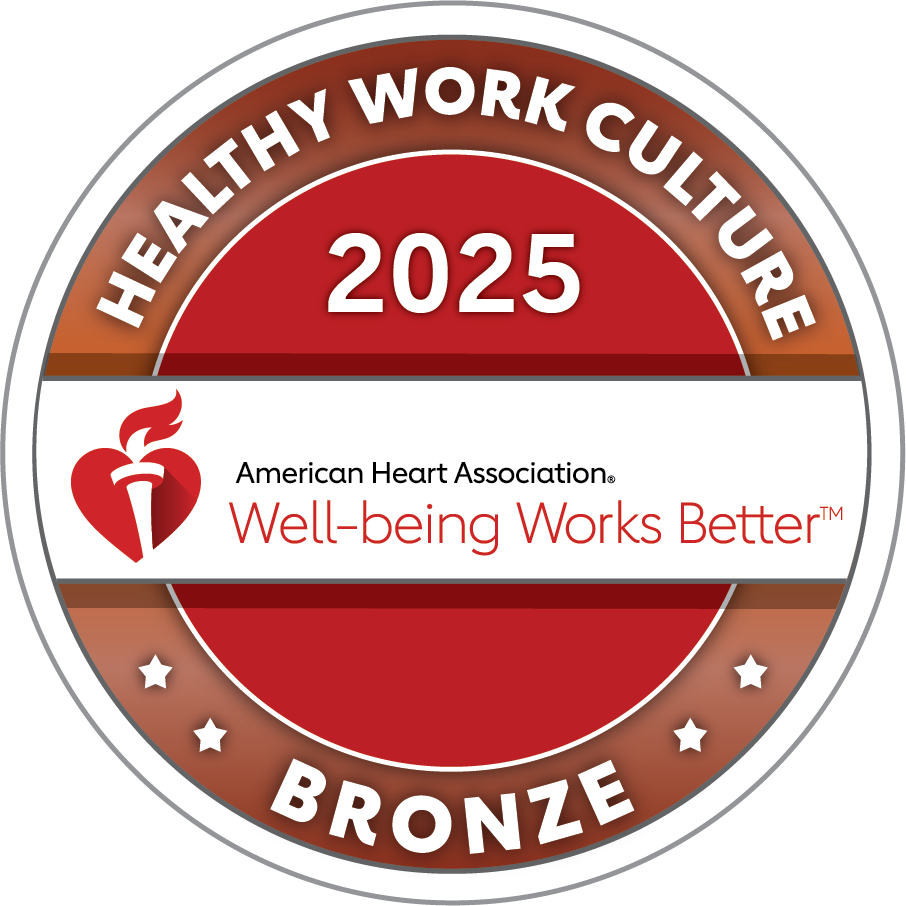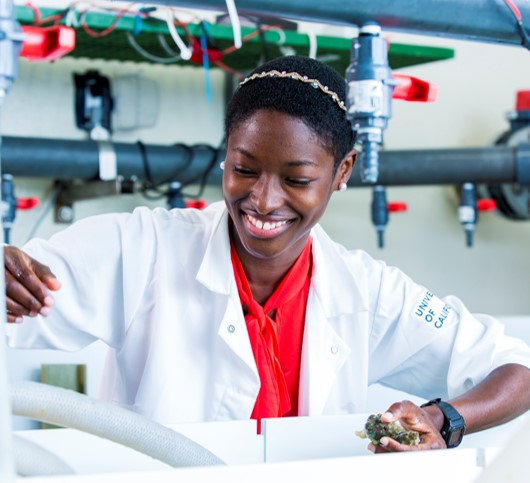Well-being at UCSB is a shared responsibility for the entire university, and is defined by a person’s physical, mental, and emotional health, the health of our communities, and the ability for individuals and the campus to contribute to the world with a sense of meaning and purpose.
Well-being includes:
-
An individual’s physical and emotional health, and level of engagement in the community.
-
The opportunities for thriving through basic needs like food, housing, education, employment.
-
Social and emotional needs, like sense of purpose, safety, belonging and social connection.
-
The quality of life for our campus, environment, and the world.

UC Santa Barbara is proud to have met American Heart Association criteria for Bronze recognition in the Association’s Well-being Works Better Scorecard. See https://www.wellbeingworksbetter.org/ for more information.
Quick Links
Jump Links
Financial Wellbeing

Financial Wellbeing
Financial Wellness is living within one’s means, planning for the future, managing money appropriately, and knowing where to find support. UC provides free financial and retirement education to all employees. To help you on the path towards financial wellbeing, UC offers onsite and virtual classes covering a wide range of topics, from budgeting basics to saving for retirement. You can also meet with a financial expert in person or over the phone for a free personal consultation.
-
Basic Needs Resources for Students | For Staff & Academics
- Emergency Assistance
- Employee Discounts
- Financial Planning & Assistance
- Gaucho Bucks - Make prepaid purchases with UCSB's campus currency at all on-campus food facilities, the bookstore, student health, and select off-campus merchants. Staff can sign up for convenient payroll deductions.
- Comprehensive Identity Theft Protection
Physical + Environmental Wellbeing

Physical + Environmental Wellbeing
Physical Wellness includes access to medical care, nutrition, getting enough sleep, and more. Environmental wellness means having clean resources, surroundings, and adequate, safe housing.
- Enrolling in Benefits: For Staff & Academics | For Students (Visit CORE Benefits (UCnet)| For Post Docs
- The Health Care Facilitator (HCF) is here to help you understand the UC-sponsored medical, dental and vision plans and assist if you have a problem you cannot solve. The program is open to staff, faculty and retirees.
- Women's Health Initiative from UCNet
- Diabetes Prevention Program
UC Health Plans Nutrition information - Nutrition Counseling
https://recreation.ucsb.edu/fitness-wellness/faculty-staff-wellness - Dep of Rec - Massage
- Leaves of Absence: For Staff | For Academics | For Students
Here are some action steps you can take to improve your nutrition access. Please make sure to consult your doctor before changing your diet. Visit myfamily.ucsb.edu for additional nutrition information and resources on campus and in our community.
-
Challenge yourself to drink an extra glass of water today!
-
Eat breakfast
-
Ask for healthy snacks at meetings
-
Eat lunch away from the computer
-
Put away the candy bowl
-
Visit a local farmers market or sign up for the CSA at UCSB
-
Try a new vegetable or fruit this week
Campus Healthy Food Options
Some action steps you might want to try are listed below. Don’t forget to consult with a doctor before you engage in any new physical activity:
-
Gaucho REC (Recreation & Exercise Classes) Free fitness classes for staff at times to fit your schedule. Learn more at Shoreline here.
-
The UCSB Recreation center offers several programs specifically geared towards Faculty & Staff to keep
you moving and fit: Walk UCSB, Power Walk. Learn More about these staff and faculty wellness programs here: Fit for Life, L.I.F.E. Circuit Class, Eat Right UCSB -
Walk or bike to work
-
Take a coworker on a walk
-
Participate in lunch time physical activity classes
-
Park an extra block away from the office or grocery store
-
Keep exercise equipment in the office (e.g., weights, yoga mat, running shoes)
-
Dedicate 5-10 minutes each day to practicing yoga/office stretches
-
Take the stairs instead of the elevator whenever possible
-
Track your physical activity using a pedometer or odometer
-
Use a walking trail to explore different parts of campus like the meditative UCSB labyrinth, North Campus’ Open Space, or around the lagoon. Other walking paths are linked here, here and here
-
Set a calendar reminder to take stretch breaks throughout the day
Physical Activity
-
Encourage employees to take lunch time walks or participate in physical activities
-
Engage your department in a walking/pedometer step challenge or other organized activity
-
Encourage co-workers to stand or walk while they are on the phone
-
Encourage co-workers to take micro breaks (30 seconds to 5 minutes) during the day to move and stretch
-
Try changing one meeting a week to a walking meeting and encourage co-workers to do the same
Nutrition
-
If you can, obtain sufficient refrigeration space for all employees
-
Organize healthy potluck meals at work
-
Create a bulletin board or shared folder to share healthy recipes with co-workers
-
Ask meeting and event planners to have healthier snacks or meals
-
Replace clear candy jars with opaque covered containers
-
Choose healthier foods/snacks in vending machines and encourage others to do the same
-
Make fresh drinking water available with a water cooler or water filter on at least one faucet
-
Encourage employees to bring reusable drinking cups/bottles instead of using disposable water bottles
-
Bring in healthy snacks like nuts, fruit, carrot sticks, hummus, etc. and encourage others to do the same
-
Develop a shared cleaning schedule for your break area if cleaning services are not provided
-
Put a fresh fruit bowl in the break area, and encourage others to add to it or contribute money to purchase new food regularly
-
Use non-food items as rewards at meetings like gift cards, flowers or balloons
Social + Emotional Wellbeing

Social + Emotional Wellbeing
Emotional/Psychological (coping skills, ability to ask for help, self-awareness, self-reflection, etc), Social/Interpersonal (having people who give you support in the other areas, develop and maintain relationships), Spiritual (having a sense of meaning, something greater than oneself), Creative well-being (ability to appreciate multiple perspectives and cultures, express self, appreciate/participate in an artform)
-
ASAP: The UCSB Academic & Staff Assistance Program (ASAP) supports the health and well-being of faculty, staff, and family members. We assist with identifying, managing, and resolving work-related and personal concerns that may affect job performance and relationships. We offer confidential short-term therapy, consultation, wellness workshops, and assistance with threat management.
-
Mindfulness Meditation Practice at UCSB
- Aura Health is an app that helps you manage your emotions, improve sleep, and find peace. Aura Health has generously offered their app free for 6 months for students, staff, and faculty. Be sure to sign in using your @ucsb.edu email!
UCSB Aura Health App Codes
- Students: UCSB-STUDENT
- Staff: UCSB-STAFF
- Faculty: UCSB-FACULTY
- UCSB "Grow" because we are never finished learning about others and how best to respect and support each other.
- Employee Engagement: Look for additional activities, groups, and support on Shoreline!
- UCSB "Grow" because we are never finished learning about others and how best to respect and support each other.
- Free myStrength App offered through your healthcare provider. myStrength is a personalized, digital program that includes interactive activities, in-the-moment coping tools, inspirational resources, and community support. You can track preferences and goals, current emotional states, and ongoing life events to improve your awareness and change behaviors. UC Anthem, Health Net, and Kaiser Members, can download and access the free myStrength program through your UC employer healthcare provider.
- UCLA MindWell
- UCTV Mental Health Channel
- Student Mental Health Resources and Promising Practices
- Stigma Free UC: Stigma-Free UC is an awareness initiative in support of UC faculty and staff’s emotional wellbeing. With monthly programming, informative webinars, discussions, links to resources and more, Stigma-Free UC has fostered open, positive discussions about mental health. Ultimately, we strive to promote compassion and empathy by listening, educating ourselves and developing an understanding of this complex and often misunderstood topic.
Workplace Wellbeing

Workplace Wellbeing
Occupational/Career Wellbeing is the fulfillment one feels at work. This may include support from colleagues & supervisors, setting boundaries, ability to grow professionally, and encouragement to manage overall work-life integrations in meaningful ways.
- Find specific ways to give back with community service opportunities in your area
Ergonomics and technology are encouraged and supported to help us move, be healthy, and do our jobs better.
-
Visit the Learning Center and take the UCSB Online Ergonomic Training & Assessment
-
Contact the campus Environmental Health and Safety office or website for assessments or information on how to construct an ergonomically sound workplace for various workstations, or request an evaluation.
-
Encourage flexible working schedules where possible.
-
Encourage employees to participate in one of the ongoing Faculty & Staff wellness classes.
-
Designate a private space in your department as a lactation room for nursing mothers (visit https://www.hr.ucsb.edu/hr-units/employee-services/lactation-support-program to learn how)
-
Organize a 30-minute before work or lunch-time meditation or yoga practice for your department. Find a quiet room for employees to comfortably sit. A person can guide the meditation, or you may try one of the many free apps that provide guided meditation and breathing exercises.
-
Encourage employees to take mini mindfulness breaks at their desk throughout the day. The 3-minute breathing space is a great example of a mindfulness break.
-
Provide time for employees to learn more about work-life balance/life-skills through ASAP, Faculty & Staff Wellness, Work-Life, and more.
-
Have regular meetings with employees to determine ways to reduce stress at work
-
Acknowledge and encourage the variety of dimensions and life situations that exist in your employee population
Prioritizing WorkLife wellbeing for hybrid and remote employees is essential for fostering a sustainable and positive professional environment. By supporting a healthy balance between work and personal life, we not only enhance employee morale but also boost productivity and creativity.